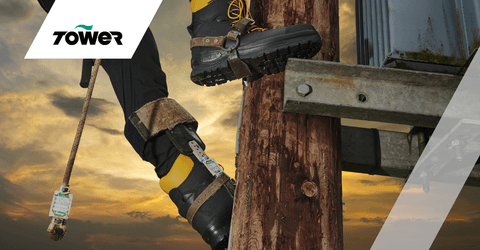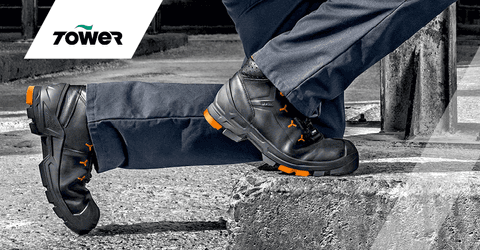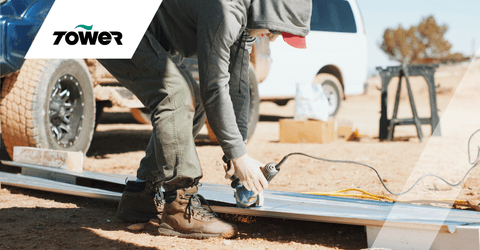Know your standards?
Make sure you're up to date and in the know about the evolution of foot protection standards and what to consider when choosing safety boot and shoe protection.

The safety of feet is imperative. Poorly chosen foot protection can be detrimental to both employees and employers.
Safety footwear is a key part of PPE to maintain foot health when carrying out any work activity. We help you select footwear from our extensive range that protects from falling objects, whilst providing uncompromising style, comfort and orthopaedic support. We can even conduct sizing clinics to make sure your employees get the right fit.

There is a variety of safety footwear on the market, but you wouldn’t buy foot protection in just any way. All safety footwear must meet a minimum safety standard set out by ISO.
There are four built-in components to foot protection: toe, midsole, metatarsal and heel impact absorption. You will usually find all these components incorporated into a work boot or shoe, with a composite or steel toe cap.
Metatarsal protection has an inbuilt defence in the tongue, which protects against excessive impact and provides maximum safety during pressure use. The midsole usually contains a metal plate to prevent penetration from objects such as nails or glass.
Make sure you're up to date and in the know about the evolution of foot protection standards and what to consider when choosing safety boot and shoe protection.

As safety boots are subject to the same regulations as other PPE they should be worn when the worker is at risk and needs to be protected. Safety boots are a workplace essential as they protect your feet from long-term damage whilst providing comfort and support.
While they may be suitable for hiking and outdoor wear, they are not designed for this purpose. Safety boots and other forms of foot protection may include a composite or steel toe cap making them heavier than hiking shoes and don’t have the same level of breathability.
Finding foot protection that fits correctly and is comfortable is extremely important. Your feet need to be able to move freely within the shoe or boot and you should be able to lay a finger down the back of your heel when your foot is fully in the shoe.
If you're trying out new work shoes, test them in the morning as well as in the evening. Your feet tend to change size throughout the day due to heat and exercise.
It's also important that female workers are provided with female-fit work shoes and not offered men’s PPE instead. Women’s feet have different proportions to men, and incorrect sizing can lead to slip or trip hazards.
There are several things which should be considered when selecting the correct foot protection. Making sure you have the right PPE for the job prevents accidents and protects your employees from life-changing injuries. Make sure to choose carefully.
Flexibility is very important if your role requires you to crouch down or kneel frequently. Boots and shoes that don’t have this kind of flexibility can feel quite restrictive and uncomfortable if you need to flex your feet to work.
Footwear should provide support and protection for your feet and ankles if lifting heavy objects. Carrying heavy loads can put your feet at risk. Always check your shoes contain a midsole as this protects from penetration by sharp objects.
Keep your feet dry at all times and warm if working in cold climates. If your feet are exposed to damp or cold conditions for a prolonged amount of time, it can damage foot health and increase the chances of developing infections.

All PPE must be replaced when it is no longer fit for purpose. By taking care of your equipment correctly you ensure longevity. If your safety footwear is damaged in any way, it must be replaced immediately as damaged shoes and boots can increase your risk of injury. Make sure to regularly check your foot protection for signs of wear and tear, in order to ensure your footwear is in top condition.